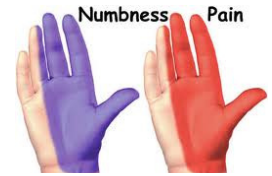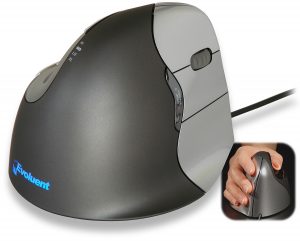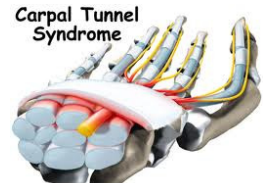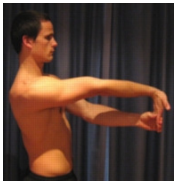Carpal tunnel syndrome
You’re working at your desk, trying to ignore the tingling or numbness you’ve had for months in your hand and wrist. Suddenly, a sharp, piercing pain shoots through the wrist and up your arm. Just a passing cramp? More likely you have carpal tunnel syndrome, a painful progressive condition caused by compression of a key nerve in the wrist.
Carpal tunnel syndrome is a condition in which there is pressure on the median nerve — the nerve in the wrist that supplies feeling and movement to the ‘thumb’ side of the hand (the palm, thumb, index finger, middle finger, and thumb side of the ring finger). It can lead to numbness, tingling, weakness, or muscle damage in the hand and fingers.
So what is the carpel tunnel, and what causes carpel tunnel syndrome? More importantly how can you and your physio work together to treat it?
Causes, incidence, and risk factors:
The area in your wrist where the nerve enters the hand is called the carpal tunnel. The carpal tunnel also contains numerous flexor tendons from the muscles of the forearm allowing them to attach to the wrist and fingers via the carpal tunnel. This tunnel is normally narrow, so any swelling can pinch the nerve and cause pain, numbness, tingling or weakness; this is known as carpal tunnel syndrome. Carpal tunnel syndrome normally occurs following damage to the flexor tendons within the carpal tunnel. This results in swelling and inflammation of the tendons, which further narrows the tunnel, compressing the median nerve. Damage to the flexor tendons usually occurs due to overuse of the forearm flexors, however it may also occur traumatically due to a specific incident.
So who is at risk?
Carpal tunnel syndrome typically occurs in association with activities that place repetitive stress through the flexor tendons. Typing on a computer keyboard is the most common cause of carpal tunnel. Other causes include:
- Driving

- Painting
- Playing some musical instruments
- Playing sports such as gymnastics, cycling, golf or racquet sports
- Sewing
- Using tools (especially hand tools or tools that vibrate)
- Carpentry, brick-laying, chopping wood and repetitive use of a screwdriver
- Writing
- Pregnancy – The fluid retention and swelling that’s so common during pregnancy can increase the pressure in this relatively narrow and inflexible space, compressing the median nerve that runs through it.
- Arthritis
- Diabetes
- Sudden increase in activities
- A fall onto an outstretched hand causing a sprain or fracture of the wrist
- A once off forceful movement involving heavy lifting or a gripping force through the wrist.
Although carpal tunnel syndrome can occur at any age, it is commonly seen in patients greater than 50. Carpal tunnel syndrome is also more common in women and usually affects the dominant hand. Occasionally, it may affect both hands.
Symptoms
The symptoms associated with this condition usually develop gradually over a period of time. Initially, symptoms may present as an ache in the wrist and hand following an aggravating or unaccustomed activity. This may often be felt at night or first thing in the morning. As the condition progresses, pain or a burning sensation may be felt with every day activities involving the wrist and fingers such as carrying groceries, opening a jar, shaking hands or using the computer.
Pins and needles or numbness in the fingers (excluding the little finger) may be detected along with weakness in the fingers and thumb. This may present as difficulty performing fine movements of the hand, reduced grip strength, or an increased frequency of dropping objects. Patients with this condition will often experience wrist and finger stiffness upon waking in the morning.

Carpal tunnel syndrome may be associated with neck or upper back pain on the same side, and obvious wasting of the muscles of the thumb and hand may be detected.
Treatment
Most cases of carpal tunnel syndrome settle well with appropriate physiotherapy treatment. This includes careful assessment by the physiotherapist to determine which factors have contributed to the development of the condition, with subsequent correction of these factors. The success rate of treatment for patients with this condition is largely dictated by patient compliance. One of the key components of treatment is that the patient rests sufficiently from activities that increase their pain.  Activities which place large amounts of stress through the forearm flexors should be minimized, this allows the body to begin the healing process in the absence of further tissue damage. Once the patient can perform these activities pain free, a gradual return to these activities is indicated provided there is no increase in symptoms.
Activities which place large amounts of stress through the forearm flexors should be minimized, this allows the body to begin the healing process in the absence of further tissue damage. Once the patient can perform these activities pain free, a gradual return to these activities is indicated provided there is no increase in symptoms.
Ignoring symptoms or adopting a ‘no pain, no gain’ attitude is likely to lead to the problem becoming chronic. Immediate treatment in patients with this condition is beneficial to ensure a speedy recovery. Once the condition is chronic, healing slows significantly resulting in markedly increased recovery times.
Patients with carpal tunnel syndrome will usually benefit from following the R.I.C.E. Regime. The R.I.C.E regime is beneficial in the initial phase of the injury (first 72 hours) or when inflammatory signs are present (i.e. morning pain or pain with rest). This involves resting from aggravating activities (often with the use of a splint or Wrist Brace), regular icing, the use of a compression bandage and keeping the arm elevated. Anti-inflammatory medication may also significantly hasten the healing process by reducing the pain and swelling associated with inflammation.
 Patients with carpal tunnel syndrome should perform pain-free flexibility and strengthening exercises as part of their rehabilitation to ensure an optimal outcome. The treating physiotherapist can advise which exercises are most appropriate for the patient If work conditions are creating the issue, specialized products can relieve the pain and prevent reoccurrence.
Patients with carpal tunnel syndrome should perform pain-free flexibility and strengthening exercises as part of their rehabilitation to ensure an optimal outcome. The treating physiotherapist can advise which exercises are most appropriate for the patient If work conditions are creating the issue, specialized products can relieve the pain and prevent reoccurrence.
- Special devices include keyboards, different types of computer mice and forearm supports .
- Someone should review the position you are in when performing your work activities.
For example, make sure the keyboard is low enough so that your wrists aren’t bent upward while typing. Bodysmart can perform onsite ergonomic assessments to ensure that the workplace is placed in the best position to minimise stress on the body.
Expectations (prognosis)
With appropriate management and physiotherapy, most minor cases of carpal tunnel syndrome that have not been present for long can usually recover within a few weeks. In more severe and chronic cases recovery can be a lengthy process and may take more than 6 months.
Physiotherapy and occupational therapy for carpal tunnel syndrome
Physiotherapy treatment for carpal tunnel syndrome is vital to hasten the healing process, ensure an optimal outcome and decrease the likelihood of future recurrence. Treatment may comprise of the use of the following:
- Soft tissue massage
- Electrotherapy
- Bracing or splinting
- Joint mobilisation
- Dry needling
- Ice or heat treatment
- Progressive exercises to improve flexibility and strength
- Education
- Training and activity modification advice
- Technique correction
- Anti-inflammatory advice
- Devising an appropriate return to activity plan
- Ergonomic assessment and implementation of specialised office devices.
Other intervention for carpal tunnel syndrome
If conservative treatment is not effective further investigations such as nerve conduction studies, X-rays, ultrasound or MRI investigations may be required. Further treatment including pharmaceutical intervention, corticosteroid injection or surgery may be recommended by your health practitioner. Surgery involves cutting the connective tissue that forms the roof of the carpel tunnel to decompress the median nerve. Following surgery, the wrist may be bandaged and placed in a sling or splint for 1 – 2 weeks. Rehabilitation with physiotherapy is required following the procedure to ensure an optimal outcome.
Exercises for carpal tunnel syndrome
- Wrist Flexor Stretch
Keeping your elbow straight, take your wrist and fingers backwards using your other hand until you feel a mild to moderate stretch pain-free. Hold for 15 seconds and repeat 4 times provided there is no increase in symptoms.













